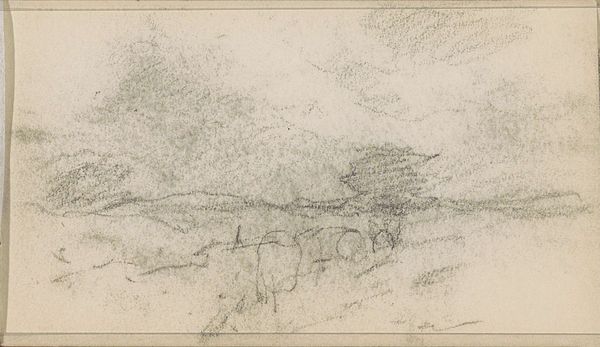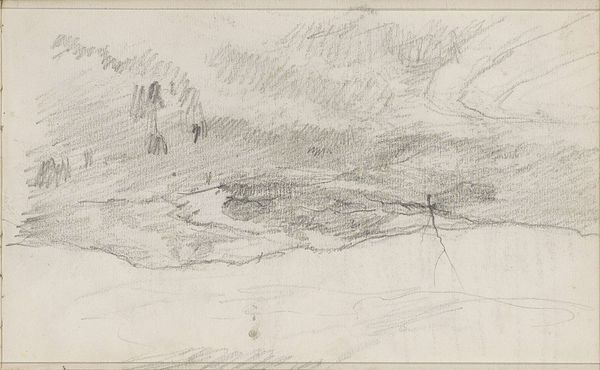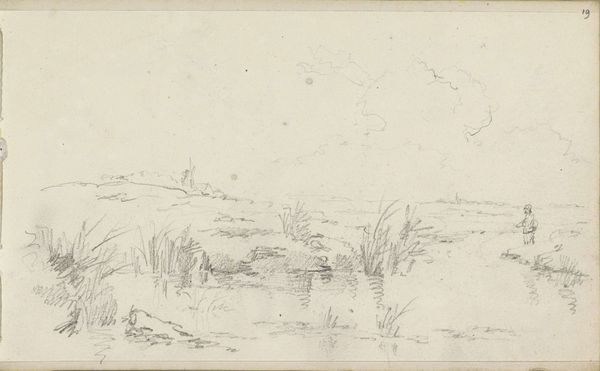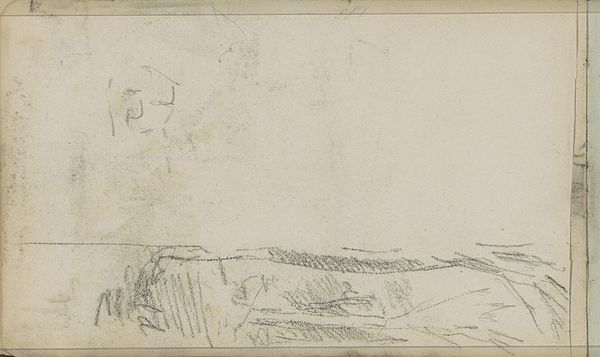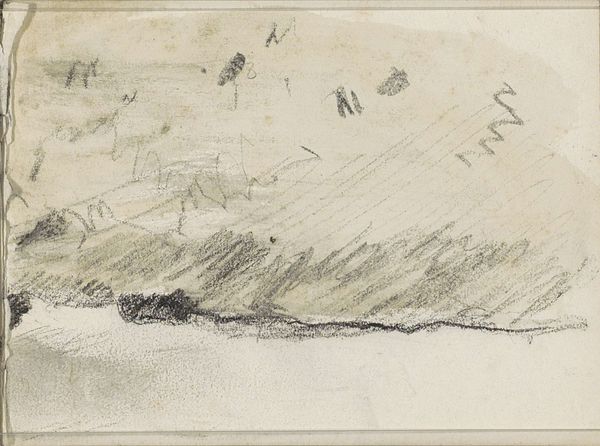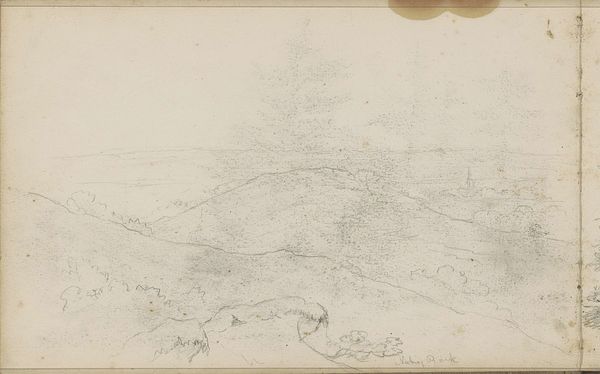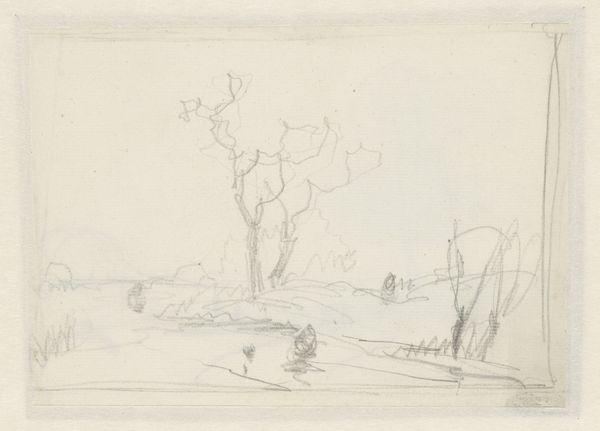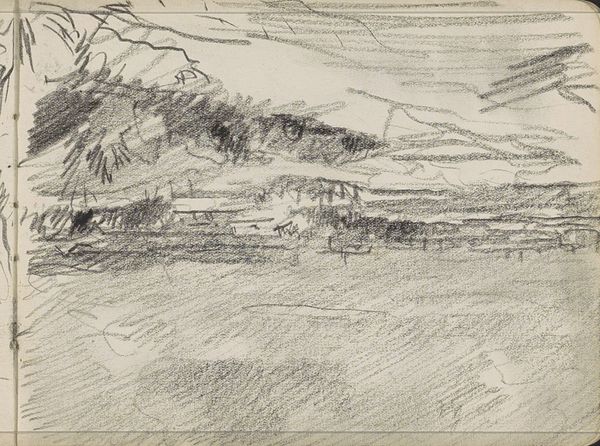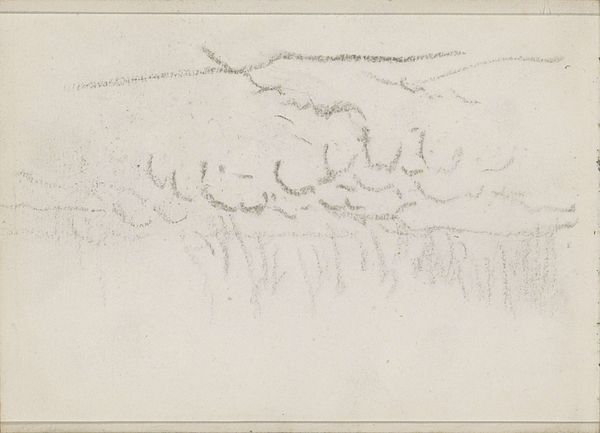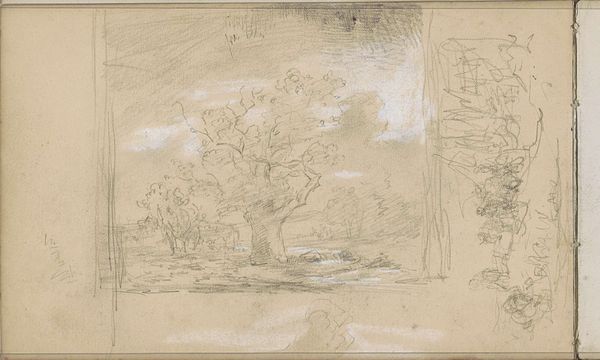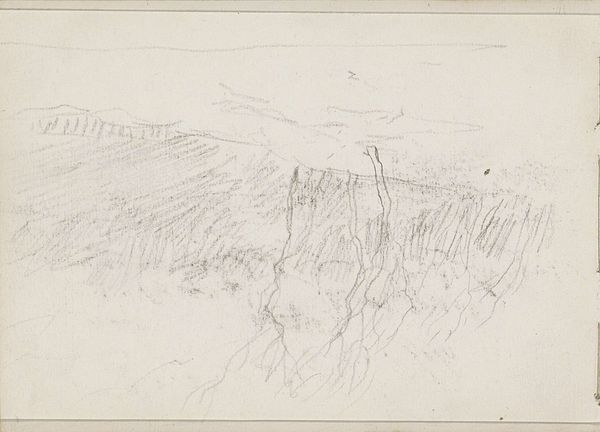
#
amateur sketch
#
toned paper
#
light pencil work
#
pencil sketch
#
incomplete sketchy
#
river
#
etching
#
personal sketchbook
#
pen-ink sketch
#
sketchbook drawing
#
sketchbook art
Copyright: Rijks Museum: Open Domain
Johannes Tavenraat created this quick pencil sketch of a polder landscape along the Rotte River in the Netherlands sometime in the mid-19th century. The image offers insight into the Dutch relationship with water management. Polders, low-lying tracts of land reclaimed from the sea or river, demonstrate Dutch engineering prowess. Tavenraat's choice to depict this landscape reflects a cultural pride in the nation's ability to shape its environment, converting potentially dangerous swampland into something habitable and productive. The sketch emphasizes the flat, open landscape typical of the Netherlands, punctuated by windmills and distant cityscapes. These elements carry significant cultural weight, representing both the agricultural backbone of the country and the urban centers of commerce and culture. As historians, we might consult engineering records and agricultural reports from this period to fully grasp how this landscape became central to Dutch identity. By understanding this historical and institutional context, we gain a deeper appreciation of Tavenraat's sketch and the values it represents.
Comments
No comments
Be the first to comment and join the conversation on the ultimate creative platform.


